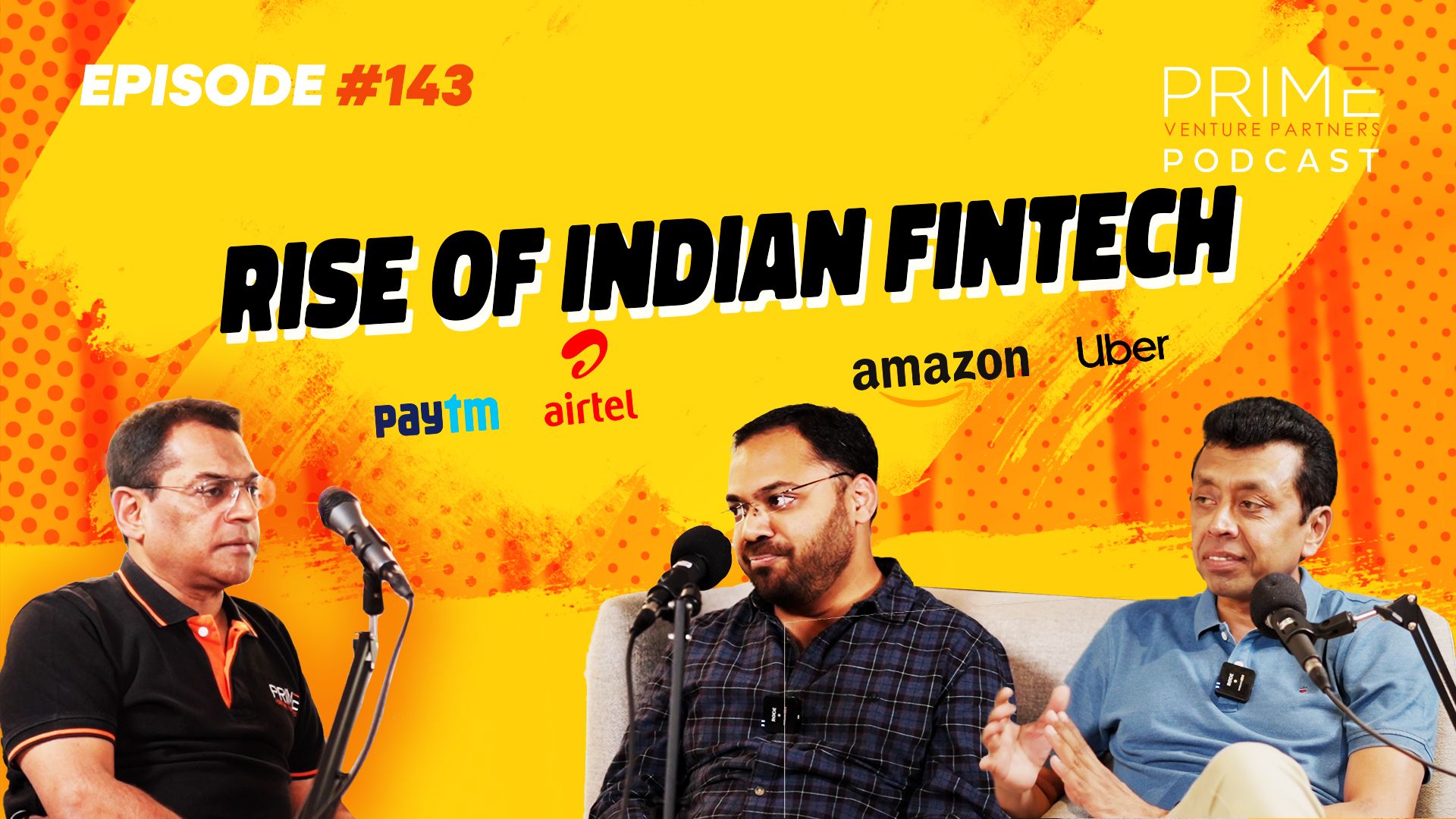
Sanjay Swamy, who is the managing partner at Prime Venture Partners, is a leading fintech entrepreneur himself and has earlier helmed roles such as chairman and co-founder, Ezetap (acquired by Razorpay), and CEO, mChek.
Srikanth Rajagopalan is the CEO of Perfios Account Aggregation, an off-shoot from the Perfios legacy. He is a veteran of India’s payments domain, who set up and scaled businesses at Amazon, American Express, and Nokia, as well as seed-stage startups such as ngpay (which was acquired by Flipkart).
Anshul Rai is the co-founder and former CEO of Happay. His claim to fame is Happay’s celebrated exit to CRED for $180 million.
In this episode, Swamy draws from his personal experience of working on the ‘Aadhaar’ project and explains how the growth of the fintech sector is fuelled by the revolutionary implementation of the world’s largest biometric ID system.
Rajagopalan talks about how Amazon solved the ‘cash-on-delivery’ (COD) problem using wallets, bringing COD from ~70% to ~15%.
And Rai narrates the remarkable journey of Happay from humble beginnings, building it with multiple pivots, and eventually exiting to CRED.
Aadhaar: the backbone of India’s fintech revolution
“The decision to go all biometric, do a one-time sweep of the population and get everybody in the system was a really almost ludicrous solution to the problem. But that’s where I got to see a little bit of how the government thinks and really how much competence there is in the government,” says Swamy.
“Because, typically the private sector and entrepreneurs try to cynically believe the smart guys really work for the government. It is truly a misconception, as we found some extraordinary people there, and the bar was very high,” he adds.
“Aadhaar was approximately 50 rupees per enrollment; India enrolled the whole country within that price point. We’ve seen several studies now that say India has leapfrogged in banking due to e-KYC and primarily the Aadhaar; it says what would have taken 45 years has happened in six years magically,” Swamy quotes from his personal experience on the Aadhaar project.
Story of Happay that exited at $180M to CRED
“In 2014 when we started, we were two of us with 60 interns. The app was developed by an intern; our marketing, customer success was all done by interns. Thanks to their enthusiasm, we hit 200,000 users with $0 spent on marketing. We wanted to make education institutions cashless but figured no one is willing to pay. We wanted peer-to-peer transactions to be cashless; no one was willing to pay 2 rupees commission. So eventually we moved to expense management solutions for corporations and that changed the game for us,” narrates Rai.
How Amazon reduced cash-on-delivery from ~70% to 15%
Rajagopalan was one of the earliest Amazon India employees leading the payments function. He describes a masterclass in business problem solving:
“To put things in context, in 2013, when I joined, the Amazon India website was five weeks old, and interestingly the number one charter for us was not to make payments better; rather it was to kill cash-on-delivery. 70% of all e-commerce orders across the industry were cash and delivery; turns out that it was a trust issue, not a payments issue. People were still very new to ordering from a random website with a promise that it would show up in two days’ time.
“The entry of wallets was the game-changer for this problem, as we kept reinforcing trust with the customer by delivering their goods on time and being genuine.
“Slowly, then we said take that next step of faith and pay at checkout, rather than pay on delivery. And then we had various ways of nudges and little offers saying pay digitally, a little delta will be credited back to you in your wallet, and as your wallet balance builds, builds, builds and you say, okay, now I can actually use this balance for something meaningful.
“What changed the game for us in wallet adoption was really the digital goods. When we launched Prime movies or videos and bite-sized 50-rupee or 20-rupee transactions, that spun the flag. That then started creating this habit of paying online regularly. And, of course, then you had all these partnerships with, you know, special offers on credit cards, co-brands and all this stuff that has brought this wave of digital payments in India.”
The episode ends with a question to Rajagopalan on how startups/companies sell to Indian banks, financial institutions and enterprises largely. Watch the episode to learn how Perfios did it. He ends by saying, “Is it easy? Not at all, is it possible? Yes, but it takes time to build value and relationships.”
Timestamps:
0:00 – Why is Aadhaar the backbone of India’s fintech revolution?
7:36 – Building Happay
18:18 – Evolution of digital payments at Amazon
23:46 – Why did Perfios pivot to B2B?
31:47 – Evolution of Perfios
39:01 – How to build products for Indian enterprises
Edited by Swetha Kannan






![Read more about the article [YS Exclusive] Lendingkart raises Rs 50 Cr debt from Triodos; eyes Rs 1,250 Cr borrowings in future](https://blog.digitalsevaa.com/wp-content/uploads/2022/07/1-21560743939460-300x150.png)

![Read more about the article [Funding alert] Venture Catalysts and IAN lead Rs 5 Cr funding round in industrial robotics startup Peppermint](https://blog.digitalsevaa.com/wp-content/uploads/2021/09/Image6rec-1630475178194-300x150.jpg)

